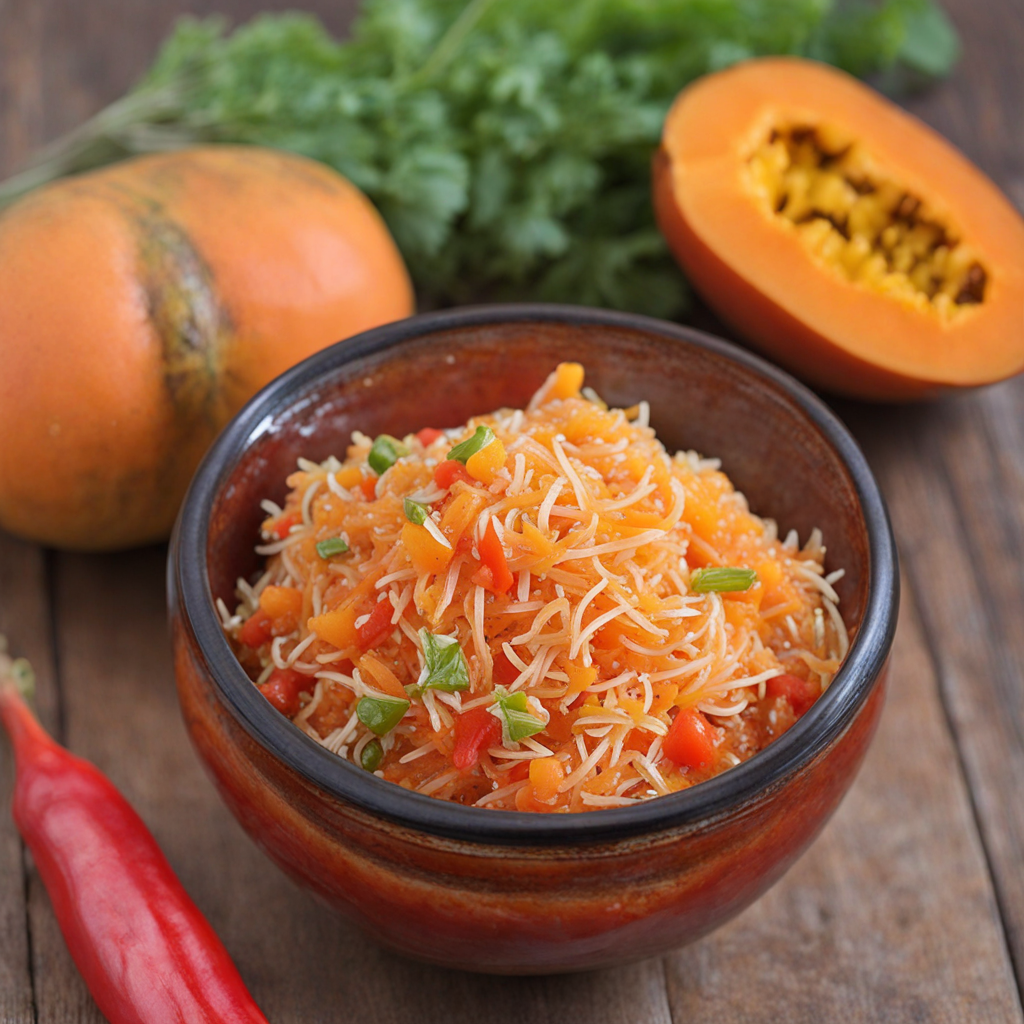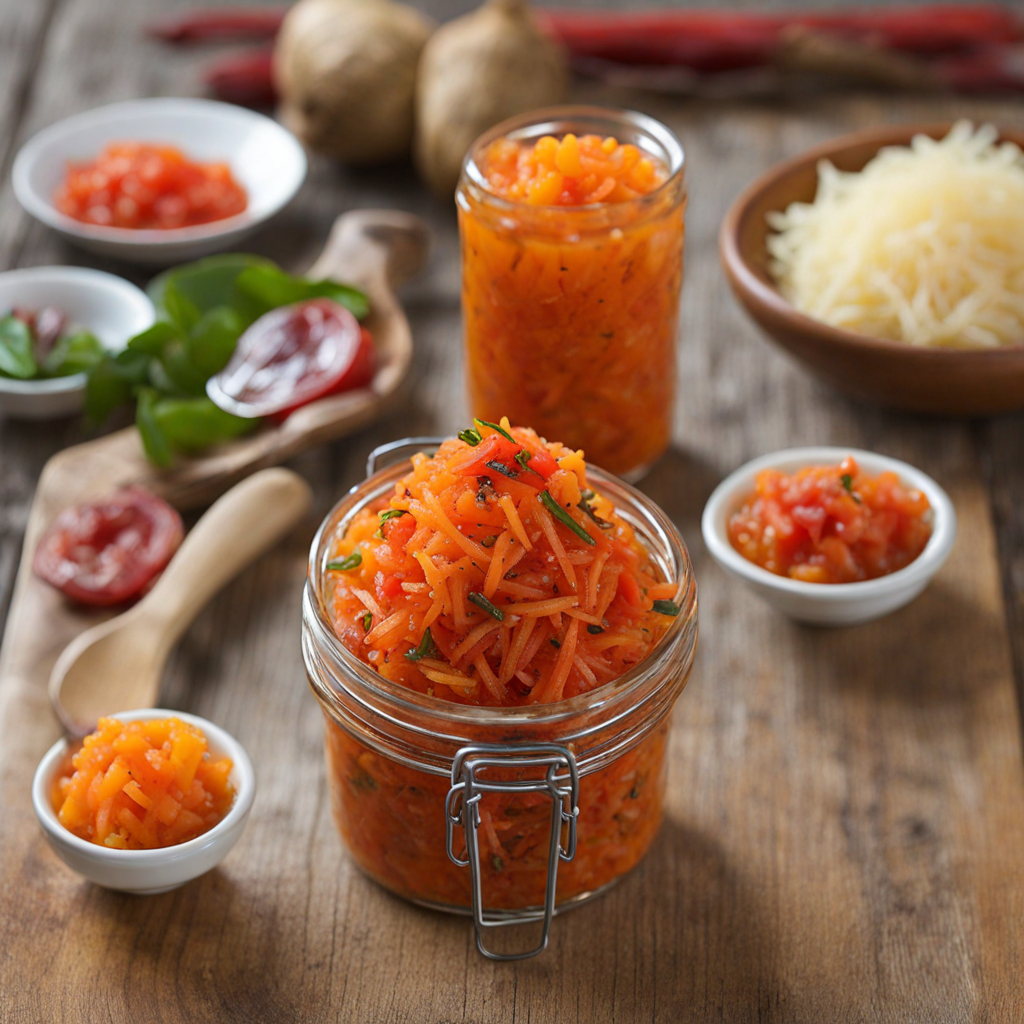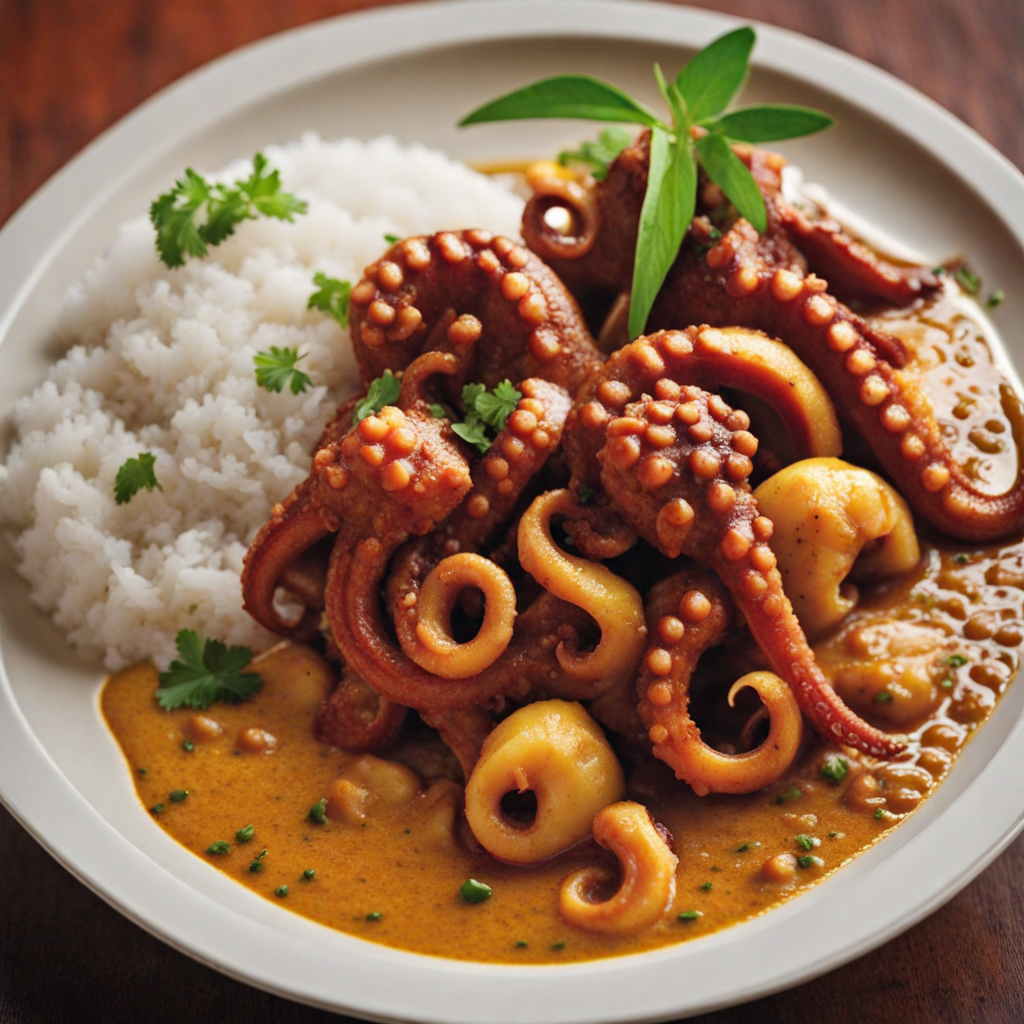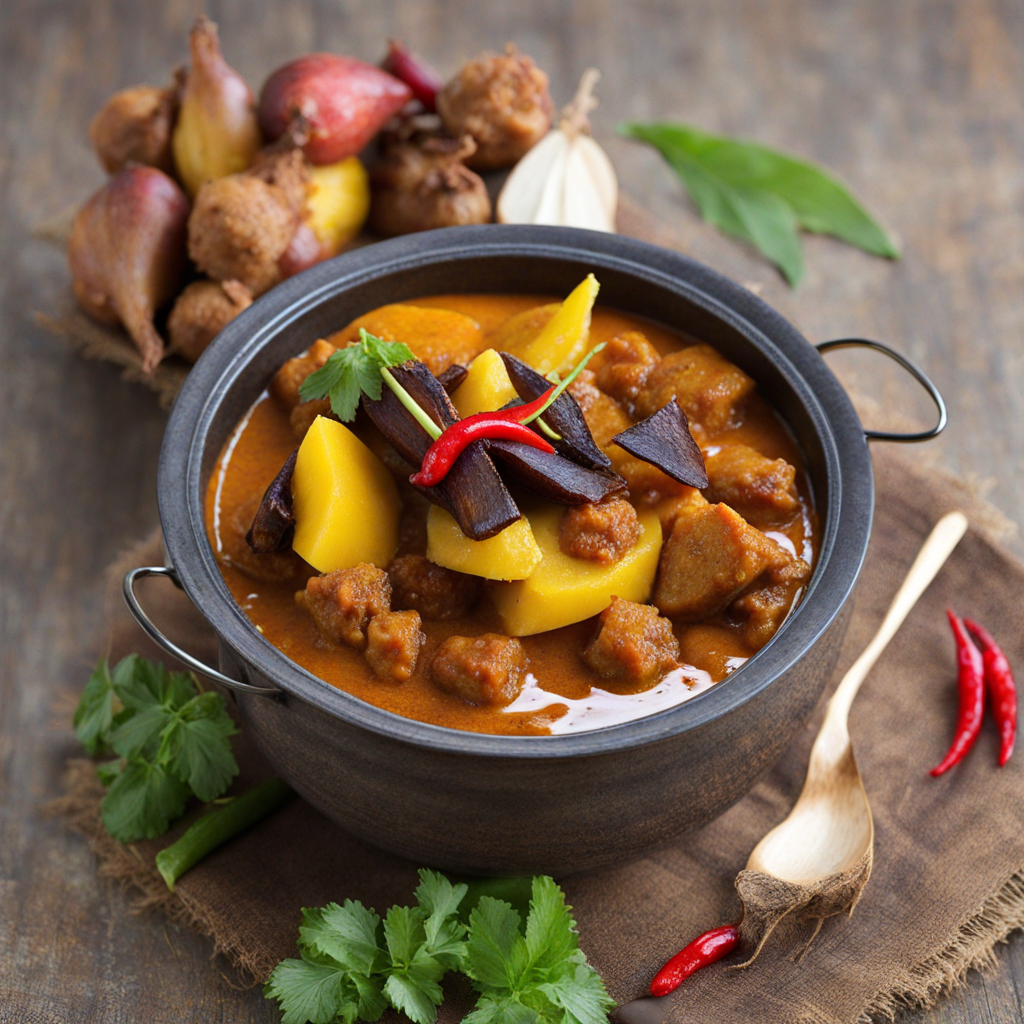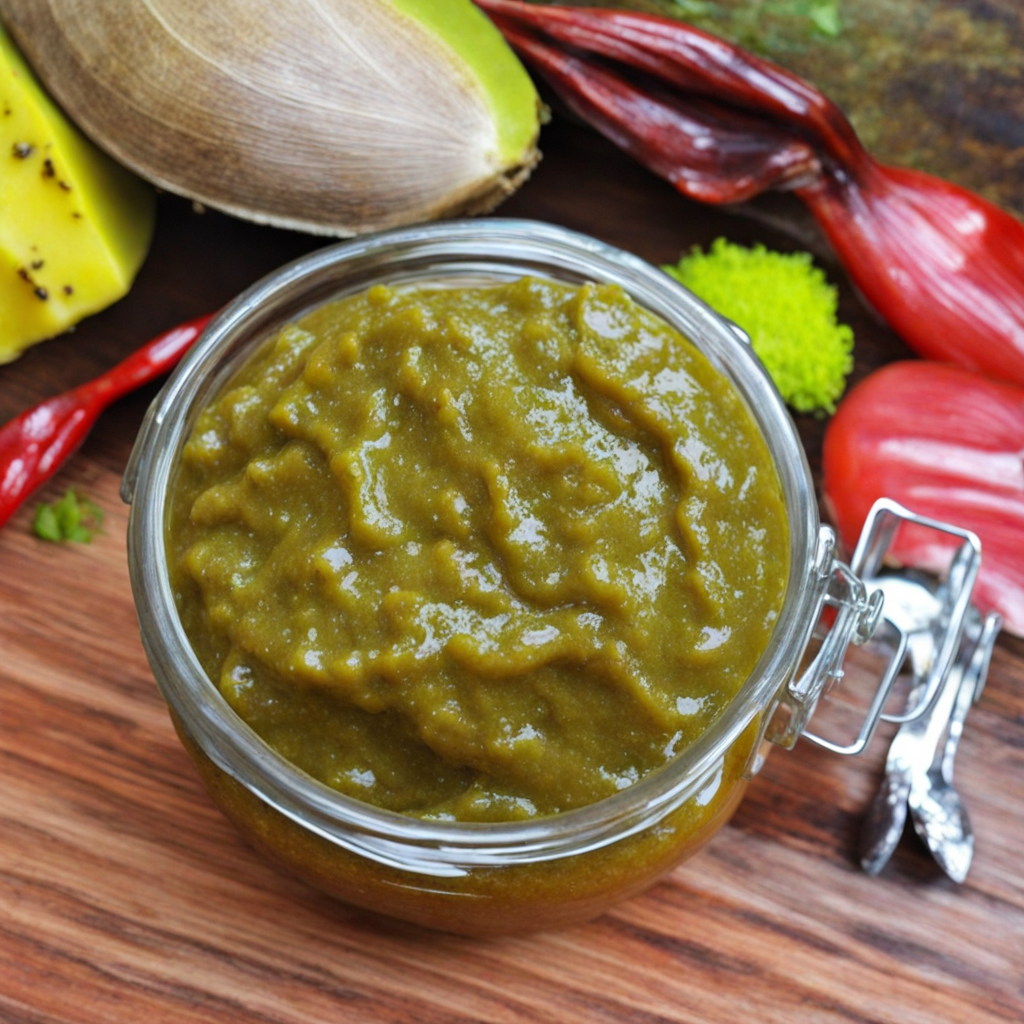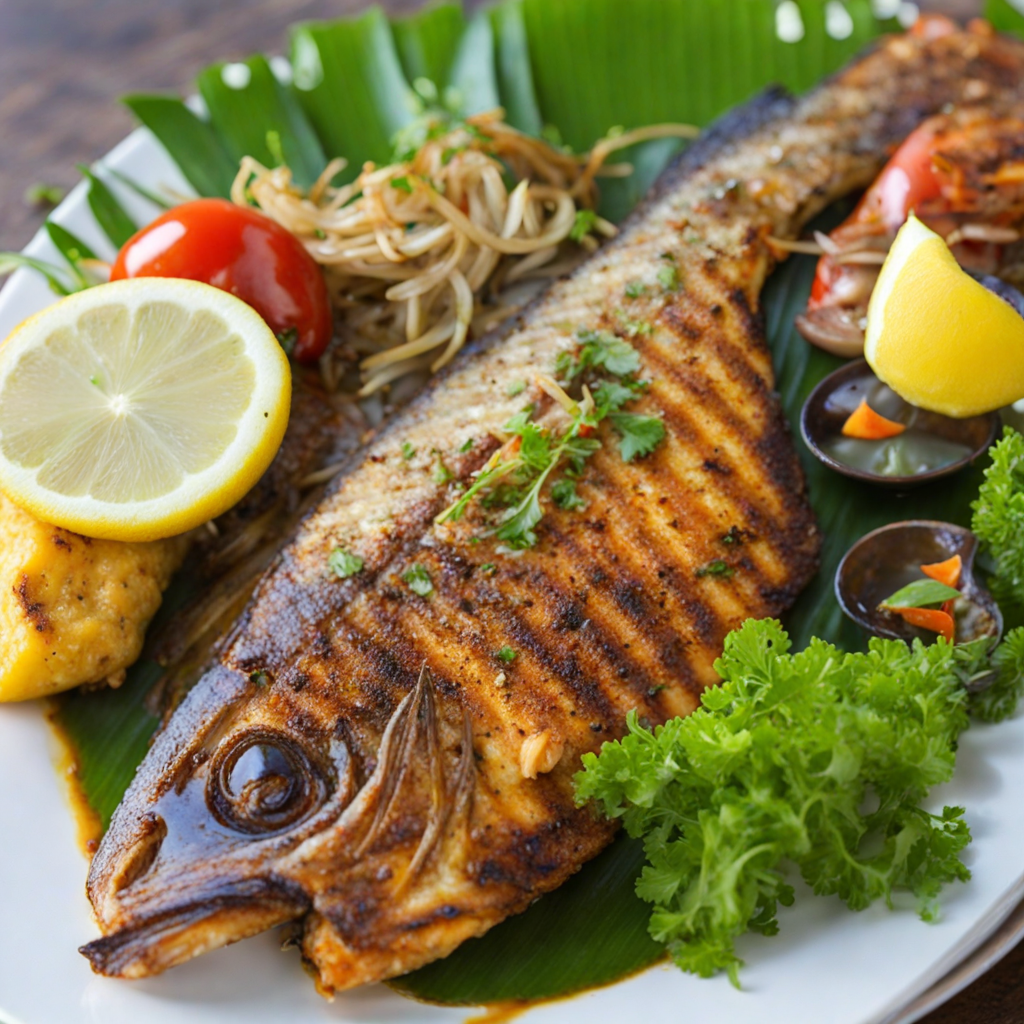Satini
Satini is a vibrant and refreshing dish from the Seychelles, celebrated for its unique combination of flavors and textures. This delightful preparation typically features finely grated fresh fruits or vegetables, such as mango, papaya, or cucumber, which are then mixed with a medley of aromatic herbs and spices. The use of coconut, either in milk or grated form, adds a creamy richness that perfectly complements the natural sweetness of the fruits. The dish is often seasoned with lime juice, giving it a zesty kick that enhances the overall taste experience. In addition to its tantalizing flavors, Satini is also a feast for the eyes. The colorful ingredients come together to create a visually appealing dish that reflects the lush tropical environment of the Seychelles. The garnishing of fresh herbs like coriander or mint not only enhances its aesthetic but also infuses each bite with a burst of freshness. Served as a side dish or a light appetizer, Satini is often enjoyed with grilled fish or meats, making it a versatile addition to any meal. One of the most alluring aspects of Satini is its ability to showcase the incredible diversity of Seychelles’ local produce. With each region offering its own twist on the dish, you might encounter variations that incorporate different fruits or even spices unique to the islands. Whether you're savoring the sweetness of a ripe mango Satini or the crunch of a vegetable version, each bite transports you to the sun-soaked shores of the Seychelles, making it an unforgettable culinary experience.
How It Became This Dish
The History of Satini: A Culinary Gem of Seychelles Introduction: A Taste of Seychelles Satini, a vibrant and flavorful dish from the Seychelles, embodies the rich tapestry of cultural influences that define this archipelago in the Indian Ocean. Renowned for its fresh ingredients and unique preparation methods, satini serves as a culinary emblem of Seychellois identity. This dish, often made with finely grated coconut, fish, or vegetables, reflects the islanders’ connection to both the land and the sea, as well as their ability to adapt and innovate within the culinary arts. Origins: A Blend of Cultures The Seychelles, an archipelago of 115 islands, has a complex history that has profoundly influenced its culinary practices. The islands were uninhabited until the 18th century when French settlers began to colonize them, bringing with them their culinary traditions. This influx of French culture introduced a variety of ingredients and cooking techniques, influencing the local gastronomy. However, it was not only the French who shaped Seychellois cuisine. The islands' strategic location along trade routes also attracted merchants and settlers from Africa, India, and China. Each of these cultures contributed their flavors and cooking styles to the melting pot that is Seychellois cuisine. The dish satini, in particular, showcases this blend of influences. The term "satini" is derived from the French word "satiné," which means to blend or to mix. The original preparation involved fresh coconut, which is abundantly available across the islands, and ingredients that reflect the local bounty, such as fish, vegetables, or fruits. The use of grated coconut is a nod to the importance of this ingredient in many tropical cuisines, while the incorporation of spices and herbs represents the diverse cultural tapestry of the region. Cultural Significance: More than Just Food In Seychellois culture, food is not merely sustenance; it is an integral part of social life, rituals, and celebrations. Satini is often served at family gatherings, weddings, and festivals, where it acts as a symbol of togetherness and community. The preparation of satini can be a communal activity, involving multiple family members or friends who come together to grate coconut, chop ingredients, and share stories. This collective effort reinforces social bonds and highlights the importance of food in fostering relationships. Moreover, satini is often associated with the ocean, particularly when made with fish. The Seychellois people have a deep respect for the sea, which provides them with not just food but also a way of life. Fishing is a vital part of the Seychellois economy and culture, and dishes like satini showcase the bounty of the ocean, celebrating the islanders’ connection to their maritime environment. Development Over Time: A Culinary Evolution As the Seychelles has evolved over the centuries, so too has the dish of satini. Initially, it was a simple preparation of grated coconut mixed with local fish or vegetables. However, as globalization and tourism began to influence the islands in the late 20th century, the dish underwent transformations to cater to a wider range of palates while retaining its core essence. The increased availability of international ingredients has led to variations in satini. While traditional recipes still celebrate local fish, contemporary chefs have experimented with various proteins, including shrimp, crab, and even vegan alternatives. Additionally, the incorporation of diverse spices and flavor profiles has expanded the appeal of satini. For instance, the use of chili, lime, and coriander has become more common, reflecting the dynamic nature of Seychellois cuisine. Culinary tourism has also played a role in the evolution of satini. As more visitors come to the Seychelles, local chefs and home cooks have started to showcase their culinary heritage through cooking classes and food tours. This exchange has not only preserved traditional recipes but has also encouraged innovation, allowing satini to adapt and thrive in a fast-paced culinary world. Modern Interpretations: Satini Today Today, satini can be found in various forms across the Seychelles, from street food stalls to high-end restaurants. The dish often features prominently on menus that celebrate local cuisine, inviting tourists to experience the authentic flavors of the islands. In contemporary settings, satini is sometimes presented as an appetizer or side dish, accompanied by various sauces or dips that enhance its flavor. The visual appeal of satini has also been emphasized, with chefs focusing on presentation to delight the eyes as much as the palate. Brightly colored vegetables and herbs are often used to create a vibrant, eye-catching dish that reflects the natural beauty of the Seychelles. Furthermore, the rise of sustainability in food practices has led to a renewed interest in traditional ingredients and preparation methods. Many chefs are now sourcing local, organic ingredients, ensuring that the preparation of satini not only supports local fishermen and farmers but also honors the environment. Conclusion: Satini as a Symbol of Seychellois Identity Satini is more than just a dish; it is a symbol of the Seychelles' cultural identity, representing the harmonious blend of traditions and influences that have shaped the islands' culinary landscape. From its origins rooted in the diverse histories of its inhabitants to its modern interpretations that cater to a global audience, satini reflects the resilience and adaptability of Seychellois cuisine. As the Seychelles continues to navigate the complexities of modernization and globalization, satini remains a culinary touchstone, reminding both locals and visitors alike of the islands' rich heritage and the importance of community, sustainability, and celebration through food. In every bite of satini, one can taste not just the flavors of the islands, but also the stories and traditions that have been passed down through generations, making it a true gastronomic treasure of the Seychelles.
You may like
Discover local flavors from Seychelles


